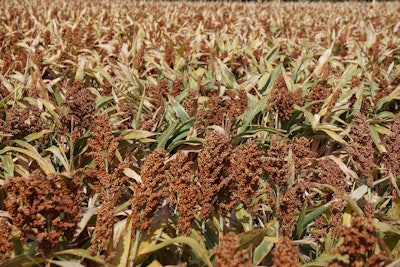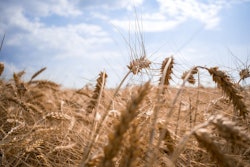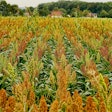
The U.S. Department of Agriculture (USDA) Economic Research Service (ERS) has updated the corn and sorghum projections for the 2023/24 marketing year, reflecting changes in domestic use and global trade dynamics. The April 2024 Feed Outlook report highlights key adjustments, particularly in the ethanol and feed sectors, which have influenced corn ending stocks and sorghum utilization.
Corn market adjustments
U.S. corn ending stocks are forecasted lower this month due to increased domestic utilization, particularly for ethanol production and feed use. The adjustments reflect a 25 million bushel increase in both categories, with ethanol production expected to reach 5.4 billion bushels and feed use climbing to 5.7 billion bushels. This uptick is based on a robust second-quarter disappearance, signaling strong demand within the sector. Additionally, the season-average farm price for corn has been slightly reduced by $0.05 to $4.70 per bushel.
Despite a reduction in corn acreage for the upcoming planting season, as reported by the USDA’s Prospective Plantings, soil conditions across much of the Corn Belt appear favorable, potentially offsetting some of the reductions in planted acres. The report notes that only 5 percent of the new corn crop is currently affected by drought, compared to last year, providing a more optimistic outlook for the 2024/25 crop development.
Sorghum sector insights
The sorghum market has also seen significant changes, with the USDA raising feed and residual use by 25 million bushels to 50 million bushels, offset by a decrease in food, seed, and industrial use. This adjustment reflects a growing domestic supply which has been supported by strong exports, particularly to China. The total U.S. sorghum ending stocks for 2023/24 remain stable, with no change from previous estimates, standing at just over 22 million bushels.
The prospective plantings report anticipates a decrease in sorghum planted area for 2024, with significant reductions expected in key producing states such as Texas and Kansas. This reflects a broader trend of shifting acreage, likely influenced by market conditions and crop rotation strategies.
Broader implications
These updates in the corn and sorghum sectors are indicative of larger trends affecting the U.S. agricultural market, including shifts in biofuel policy, export dynamics, and domestic feed demand. The adjustments to corn and sorghum usage and stocks not only reflect changes in agricultural practices and preferences but also align with global economic conditions and competitive pressures.
As the 2023/24 marketing year progresses, these changes will continue to influence market conditions, pricing, and the strategic decisions of farmers and agribusinesses across the United States.
.jpg?auto=format%2Ccompress&crop=faces&fit=crop&h=48&q=70&w=48)


















